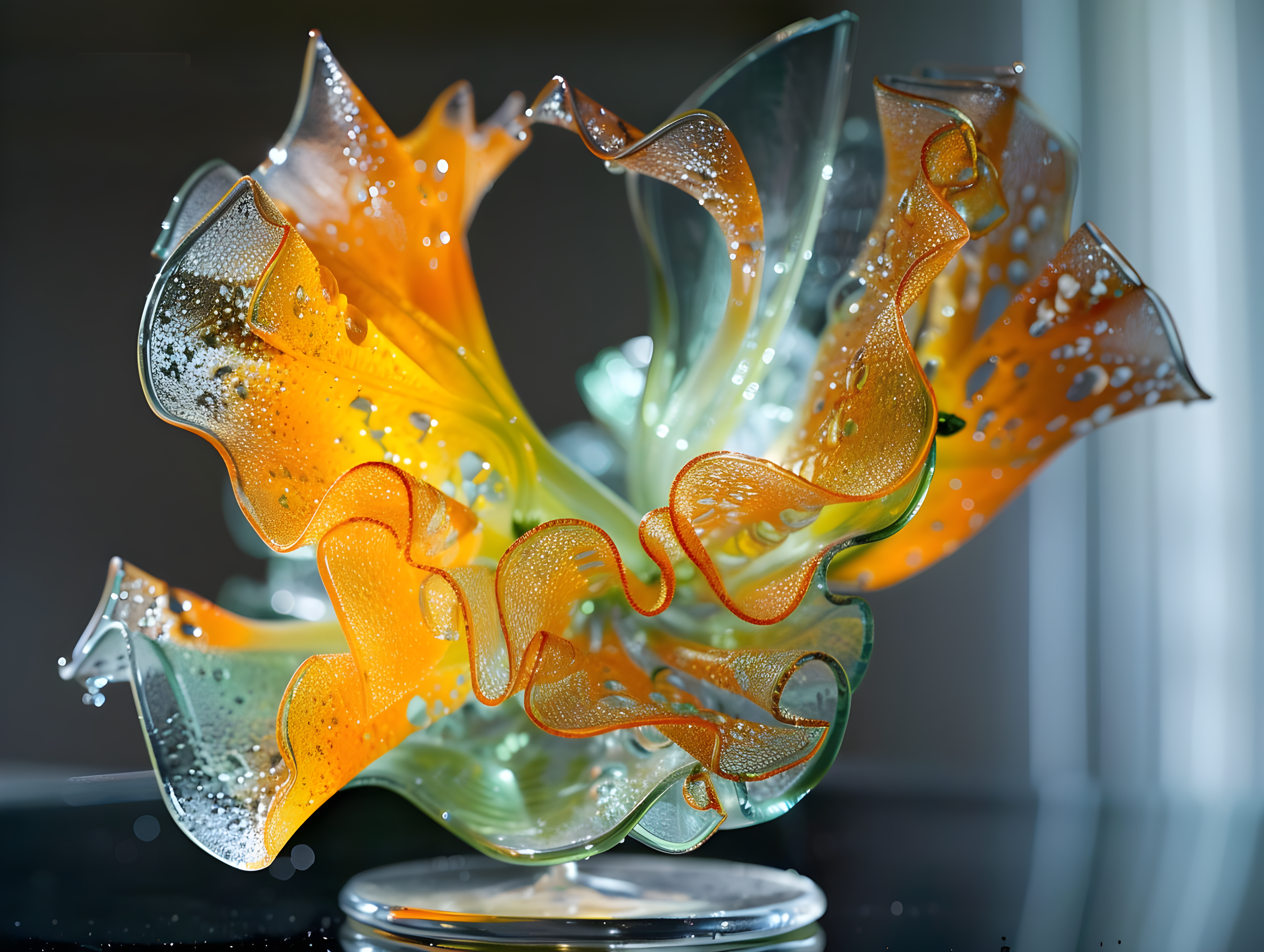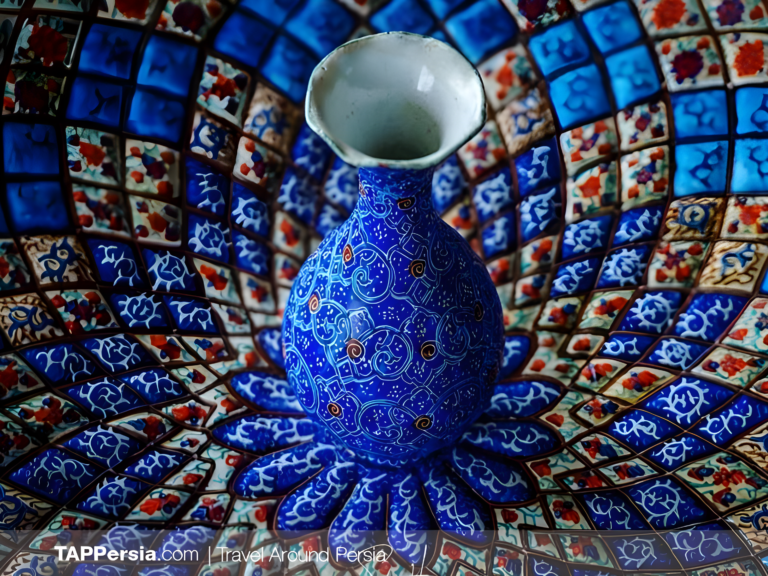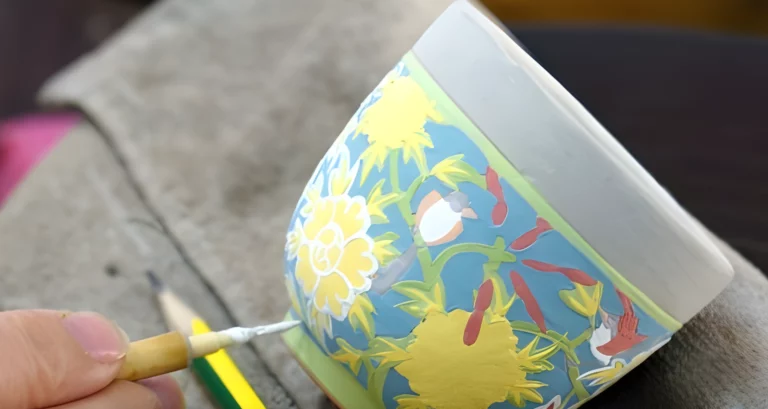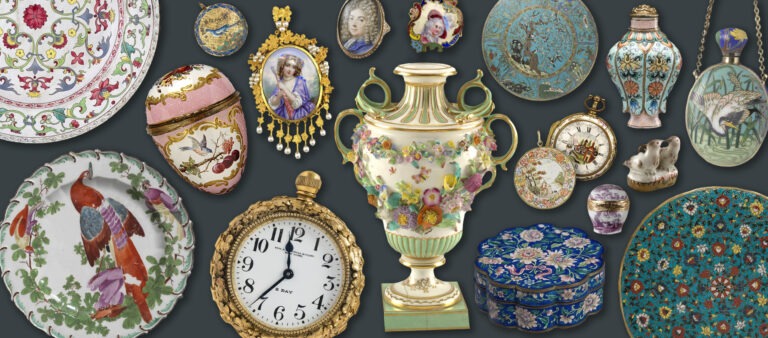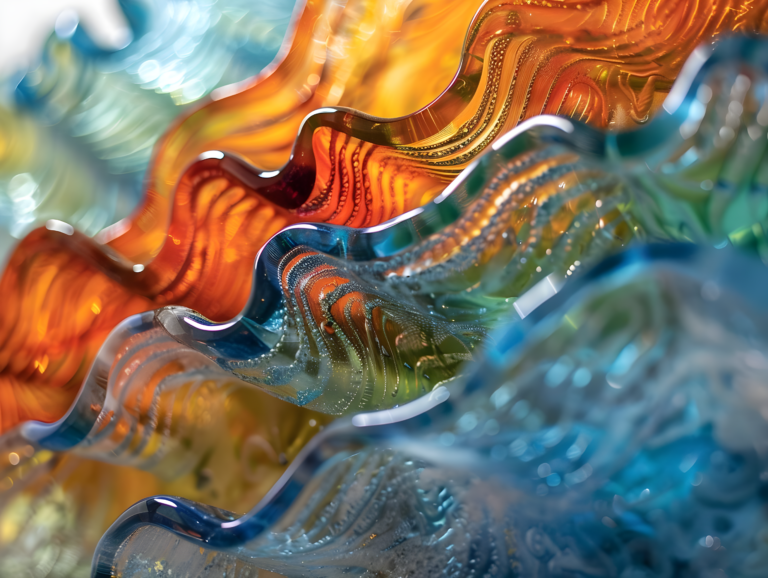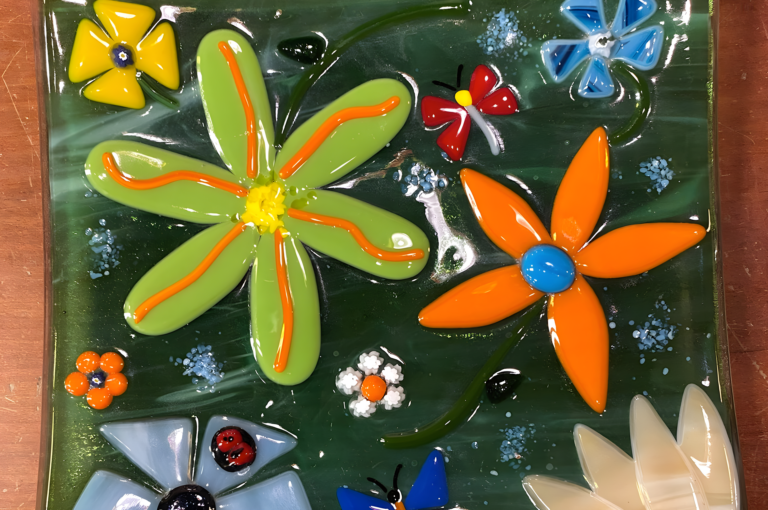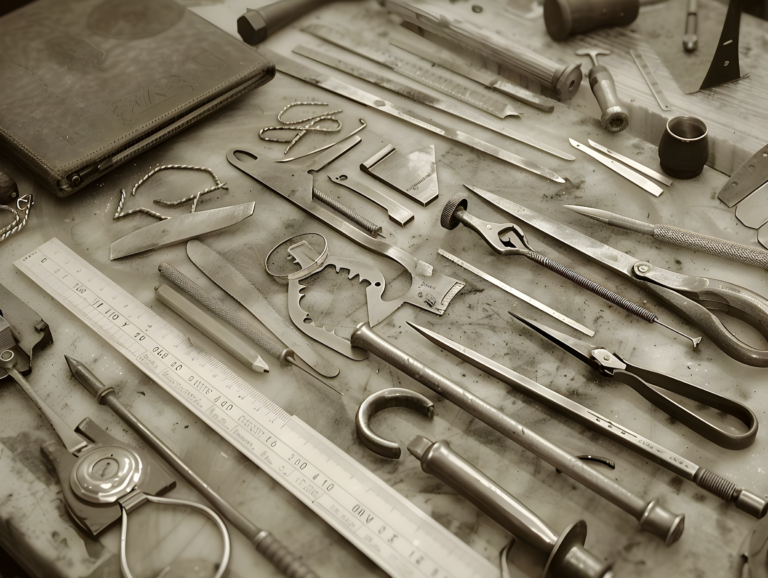Artistic Techniques for Glass Surface Decoration
Glass art is more than just shaping molten material—it's about refining and enhancing surfaces to bring depth, texture, and vibrancy to every piece. Artists use various techniques to alter the glass’s appearance, making it frosted, textured, painted, or even sculpted. Each method offers its own creative potential, from the subtle elegance of etching to the bold, layered effects of kiln-formed textures.
Mastering surface treatment techniques allows artists to push the boundaries of glass art, creating intricate details that wouldn’t be possible through shaping alone.
Understanding Different Types of Glass
Glass is a remarkably versatile material, and its properties vary depending on its composition and production method. In the world of glass art, understanding these differences is crucial for selecting the right type of glass for specific techniques, whether for sculpting, fusing, or surface treatments.
Composition and Characteristics
Glass is primarily made of silica (sand), but additional elements like soda ash, lime, or boron alter its physical and chemical properties. These variations determine factors such as thermal resistance, transparency, and durability. For instance, soda-lime glass is widely used due to its affordability and ease of shaping, whereas borosilicate glass, known for its resistance to thermal shock, is preferred for more demanding applications.
A key distinction between different types of glass lies in their expansion rate, measured by the coefficient of thermal expansion (COE). This property dictates how much glass expands and contracts with temperature changes, which is critical when fusing different pieces together. Mismatched COE values can cause stress fractures, making compatibility an essential factor in fused glass art.
Examples of Glass in Artistic Use
One striking example of specialized glass use is the work of Dale Chihuly, a master of glass sculpture. His vibrant, large-scale installations often rely on soda-lime glass, which allows for flexibility in shaping and color application. Conversely, scientific glassblowers crafting precision instruments rely on borosilicate glass for its strength and resistance to high temperatures.
Another fascinating application is in fused silica glass, known for its extreme purity and ability to withstand high temperatures without deformation. Artists working with high-tech glass applications, such as optical glass sculptures or experimental kiln-formed pieces, often turn to fused silica for its unique clarity and light-transmitting qualities.
Glass selection plays a fundamental role in the success of an artwork. Choosing the right type not only ensures structural integrity but also enhances the aesthetic outcome of the final piece.
For artists looking to experiment, understanding the interaction between different glass types can lead to innovative results. Many contemporary artists blend traditional and modern glass varieties, pushing the boundaries of what is possible in glass art.
Techniques for Enhancing Glass Surfaces
Glass, in its raw form, has a smooth and often glossy surface, but artists and craftsmen have developed various techniques to modify its texture, opacity, and decorative qualities. These surface treatments not only enhance the aesthetic appeal of glass but also introduce new tactile experiences, making each piece unique.
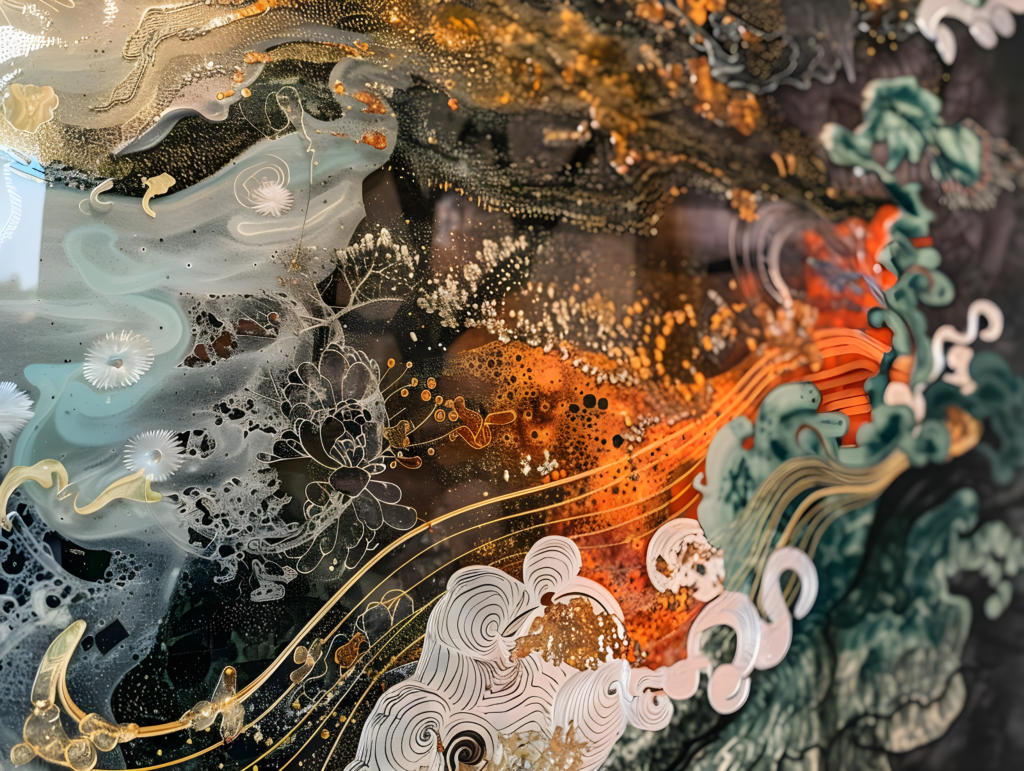
Etching and Sandblasting
Etching is a traditional method that alters the surface of the glass by removing the outer layer, creating frosted or intricate patterns. This effect can be achieved through acid etching or abrasive sandblasting.
Acid etching involves applying a corrosive solution, such as hydrofluoric acid, to the glass surface. The chemical reaction creates a soft, matte finish, often used for decorative panels, mirrors, or tableware. Sandblasting, on the other hand, uses high-pressure air mixed with fine sand or aluminum oxide to erode the glass surface, allowing for precise designs ranging from subtle gradients to bold engravings.
A great example of this technique is seen in the work of J. & L. Lobmeyr, an Austrian glass manufacturer known for their delicately etched and sandblasted glassware, which showcases intricate, lace-like patterns with a soft, diffused finish.
Engraving and Carving
Unlike etching, which removes a thin layer evenly, engraving and carving cut deeper into the glass, producing sharp details and three-dimensional effects. These techniques require skilled craftsmanship and specialized tools such as diamond-tipped engraving wheels or rotary drills. Engraved glass is often seen in fine crystalware, with patterns that catch and refract light beautifully.
An outstanding example is the work of Simon Moore, a renowned glass engraver whose detailed botanical and animal motifs demonstrate the precision and artistry of deep engraving.
Luster and Metallic Coatings
For artists seeking to add color and iridescence, metallic coatings such as luster painting and gilding provide stunning results. Luster involves applying a metallic oxide glaze, which, when fired in a kiln, produces a shimmering effect. Gold and silver leaf can also be applied to the surface, often seen in historical Venetian glass, where thin sheets of metal are embedded within the glass layers.
A fascinating application of luster can be observed in Tiffany’s Favrile glass, a signature technique developed by Louis Comfort Tiffany, which creates iridescent hues reminiscent of shimmering oil on water.
Surface Fusing and Slumping
Some artists prefer a more structural approach to surface enhancement, using techniques such as fusing and slumping. In fusing, thin layers of colored or textured glass are melted onto the base glass, creating raised reliefs and intricate color patterns. Slumping, on the other hand, allows glass to take on sculptural forms by heating it until it drapes over a mold. These methods are particularly popular in contemporary glass art installations.
One notable example is the work of Richard Whiteley, an artist who manipulates fused and slumped glass to create intricate, layered forms with striking depth and transparency.
Surface treatments can transform glass from a simple transparent medium into a work of art full of depth, texture, and character. The right enhancement technique can elevate a piece, making it a true reflection of the artist’s vision.
Whether through etching, engraving, or innovative fusing methods, artists continue to push the boundaries of glass surface decoration, bringing new dimensions to this ancient yet ever-evolving craft.
Safety in Glass Surface Treatments
Working with glass surface treatments requires careful attention to safety, as many of these processes involve hazardous chemicals, airborne particles, and sharp tools. Whether etching, engraving, or coating glass, it is essential to follow best practices to protect both the artist and the environment.
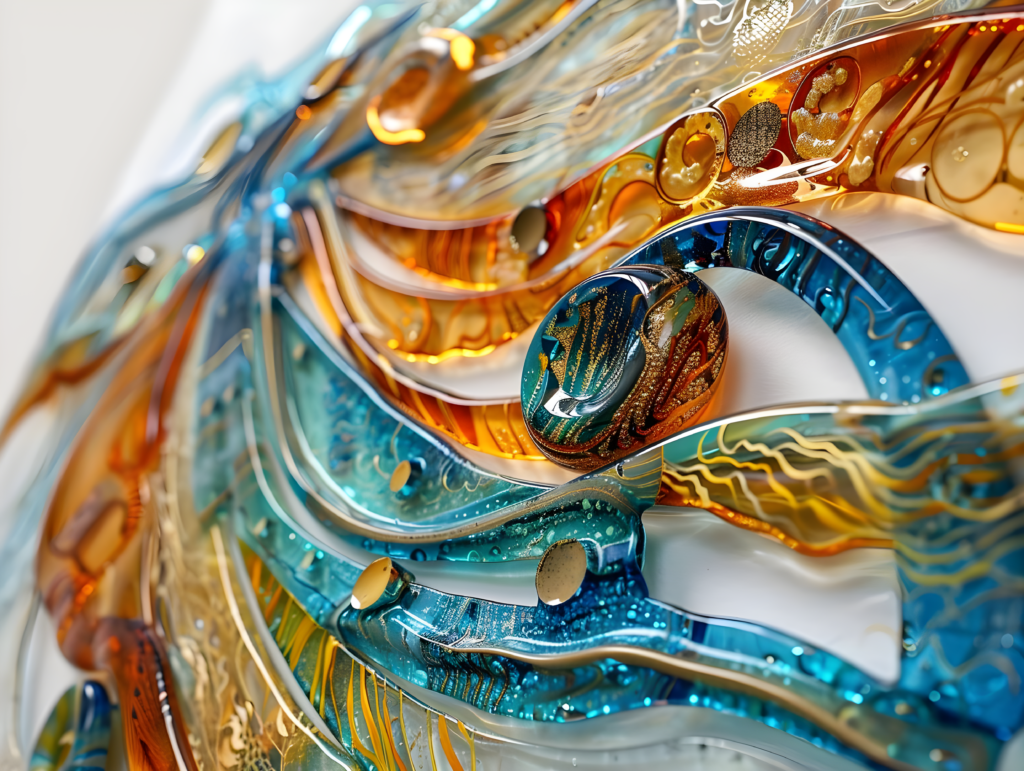
Protective Gear and Ventilation
Most glass surface treatments generate fine dust, fumes, or chemical residues that can be harmful if inhaled or absorbed through the skin. Wearing appropriate protective gear is crucial. Safety glasses or face shields protect the eyes from flying debris during engraving and carving, while respirators with HEPA filters help prevent inhalation of fine silica dust from sandblasting or grinding.
Adequate ventilation is also key, particularly when working with acid etching solutions or metallic coatings. A well-ventilated workshop with fume extractors or downdraft tables minimizes exposure to toxic vapors. The Corning Museum of Glass provides excellent safety guidelines for artists working with glass, emphasizing the importance of controlled airflow in studios.
Handling Chemicals and Acids Safely
Acid etching and certain luster coatings require handling highly corrosive substances like hydrofluoric acid or nitric acid. These chemicals can cause severe burns on contact and should only be used with extreme caution.
To ensure safety:
- Always wear chemical-resistant gloves and aprons.
- Work in a designated area with spill containment measures.
- Use neutralizing agents, such as calcium gluconate gel, in case of accidental exposure.
A notable case study highlighting the dangers of improper handling is the historical use of hydrofluoric acid in industrial glass etching, where early workers faced severe health risks before the adoption of modern safety protocols.
Preventing Injuries from Engraving and Sandblasting
Engraving and sandblasting require precision tools that can cause hand fatigue or accidental slips. Proper tool maintenance is essential—using sharp engraving bits and stable work surfaces reduces strain and improves control.
Additionally, sandblasting generates a high volume of airborne silica dust, which can lead to silicosis if inhaled over time. Enclosed sandblasting cabinets with built-in dust collection systems significantly reduce risk, as demonstrated by safety recommendations from Bullseye Glass Co., a leading manufacturer of art glass.
Disposing of Waste Materials Responsibly
Glass surface treatments often leave behind hazardous waste, such as metal oxide residues, chemical sludge, or fine glass powder. Disposing of these materials properly is not just a safety measure but also an environmental responsibility.
Artists and studios should:
- Collect and dispose of chemical waste according to local regulations.
- Use HEPA vacuums instead of sweeping to prevent airborne dust.
- Implement wet-working techniques to minimize dry particle exposure.
An inspiring example of sustainable safety practices can be seen in the Ebeltoft Glass Museum in Denmark, where artists integrate waste reduction strategies into their glasswork while maintaining high safety standards.
Prioritizing safety in glass surface treatments not only protects the artist but also ensures the longevity of their craft. By adopting proper precautions and environmentally responsible methods, glassworkers can create stunning pieces without compromising health and safety.
By understanding and implementing these measures, artists can work confidently, knowing that they are safeguarding their well-being while pushing the boundaries of creative expression.
Exploring the Boundless Possibilities of Glass Surface Treatments
Glass, with its remarkable ability to transform under various treatments, offers an expansive playground for artistic and functional innovation. From subtle textural changes to bold, reflective finishes, the ways in which glass can be enhanced are nearly limitless. By experimenting with different surface treatments, artists, designers, and engineers continue to push the boundaries of what glass can achieve.
From Subtle to Dramatic: The Aesthetic Range of Glass Treatments
Glass surface treatments can introduce a wide spectrum of visual effects. Some processes, like acid etching or sandblasting, create a soft, frosted appearance that diffuses light and reduces glare, making it ideal for architectural applications. On the other end of the spectrum, high-gloss polishing and metallic coatings result in strikingly reflective or iridescent surfaces, often used in decorative art and luxury design.
A fascinating example of this range is seen in the works of Dale Chihuly, where intricate texturing and layered color applications give his glass sculptures a dynamic, organic quality. Similarly, the Victoria and Albert Museum showcases historical glass pieces with elaborate surface treatments, demonstrating how artisans across cultures have long experimented with diverse techniques.
Combining Techniques for Unique Effects
One of the most exciting aspects of glass surface treatments is the ability to combine multiple methods to achieve unparalleled effects. Engraving can be paired with sandblasting to add depth and dimension, while chemical etching followed by fire polishing creates a contrast between matte and glossy areas.
Innovative studios, such as Lamberts Glass in Germany, have pioneered multi-step processes that merge traditional hand-cutting techniques with modern acid polishing, resulting in complex textures that interact with light in extraordinary ways.
Functional Enhancements Beyond Aesthetics
While surface treatments are often used for decorative purposes, they also serve functional roles. Anti-glare coatings improve visibility and reduce reflections in museum displays, while hydrophobic treatments make glass resistant to water and stains, a feature widely used in architectural glazing and automotive glass.
In industrial settings, laser-treated glass surfaces are engineered to be more durable and scratch-resistant, expanding their use in high-performance environments. Companies like Schott Glass continue to innovate in this area, developing specialized coatings that enhance both the beauty and utility of glass.
Pushing the Limits with New Technologies
Advancements in technology are continually redefining what’s possible in glass surface treatments. Digital printing on glass allows for highly detailed, full-color imagery with lasting durability. Dichroic coatings create mesmerizing color shifts depending on the viewing angle, a technique frequently used in contemporary sculpture and interactive installations.
An inspiring example of technological advancement in glass art can be found at Corning Museum of Glass, where modern experimental techniques are displayed alongside centuries-old craftsmanship, highlighting the evolution of glass surface treatments. <blockquote>By embracing both traditional methods and modern innovations, glass artists and designers unlock endless creative and practical possibilities. Whether through delicate engraving, striking reflective coatings, or cutting-edge laser treatments, glass remains a dynamic canvas for exploration.</blockquote>
The journey of glass surface treatments is far from complete. As new technologies emerge and artists continue to experiment, the potential for creativity and innovation in glasswork remains limitless.
The Ever-Evolving Art of Glass Surface Treatments
Glass is a medium that continually reinvents itself through innovation and creativity. From ancient hand-engraving techniques to state-of-the-art laser treatments, the evolution of glass surface treatments reflects humanity’s enduring fascination with both beauty and function.
What makes glass truly remarkable is its versatility. Whether used to create ethereal frosted textures, vibrant color shifts, or high-performance coatings, each treatment expands the possibilities of design and utility. By combining traditional craftsmanship with modern advancements, artists and engineers continue to push the boundaries of what glass can achieve.
As technology progresses, new opportunities emerge, offering even more ways to manipulate and enhance glass surfaces. The only limit is imagination—glass remains an endless source of inspiration, waiting to be explored.


